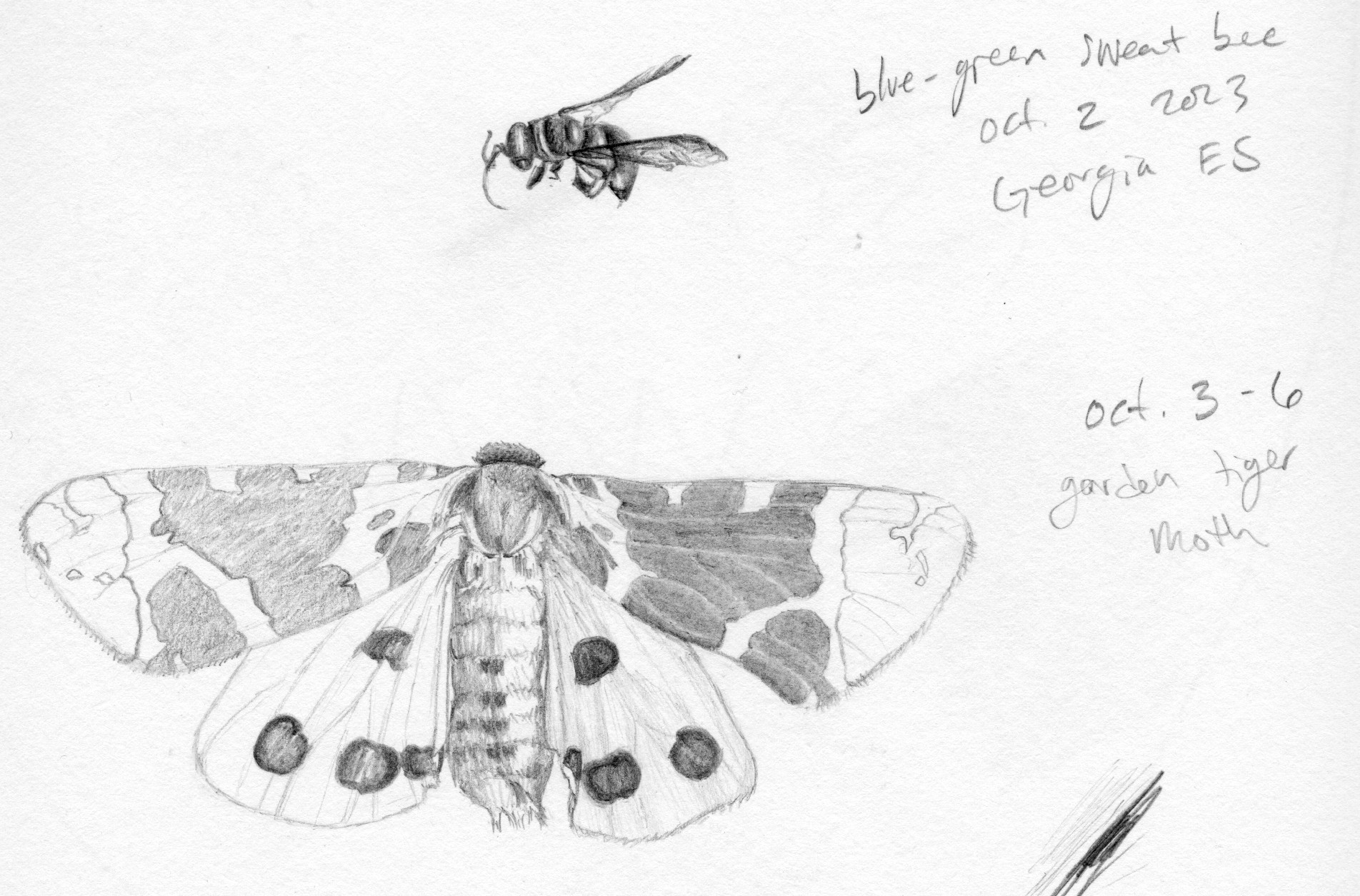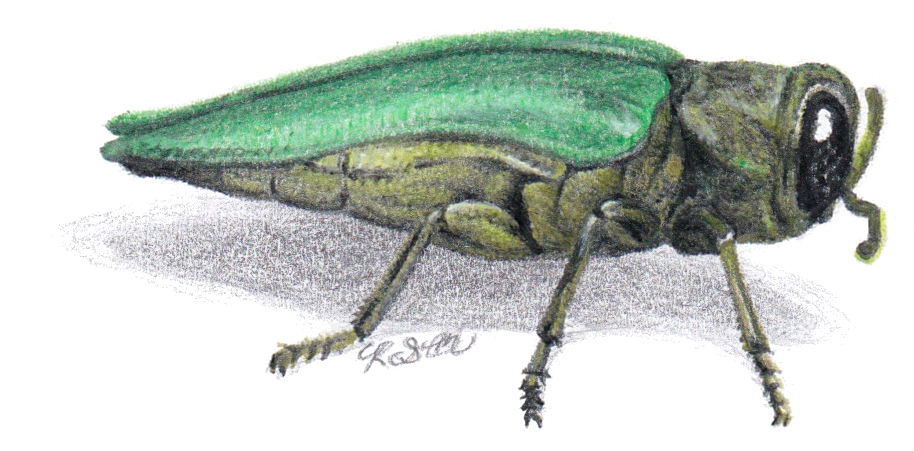- Details
Is the spiral of an orb web a golden spiral? 
This question was posed by a student in a class I taught for the Harvard Museum of Natural History on how to draw spider webs. The golden spiral grows logarithmically according to the golden ratio, a ratio reputed to be exceptionally beautiful and prevalent in nature.
- Details
Conservation and Teaching Collections
But all conservation of wildness is self-defeating, for to cherish we must see and fondle, and when enough have seen and fondled, there is no wilderness left to cherish. - Aldo Leopold
My recent school residencies reminded me of this quote, and the deep conflict it neatly sums, but in the context of conserving collections.
- Details
An Update on Emerald Ash Borer in Duxbury
Re-posted from the 2020 Duxbury Land Trust newsletter

It’s shiny! It’s cute! It’s… the Emerald Ash Borer. Despite their innocuous appearance, the Emerald Ash Borer (affectionately known as EAB) is not a beetle we want taking up residence in Duxbury’s forests. If you see signs of EAB, the Vermont Department of Forest, Parks & Recreation wants to know about it.
